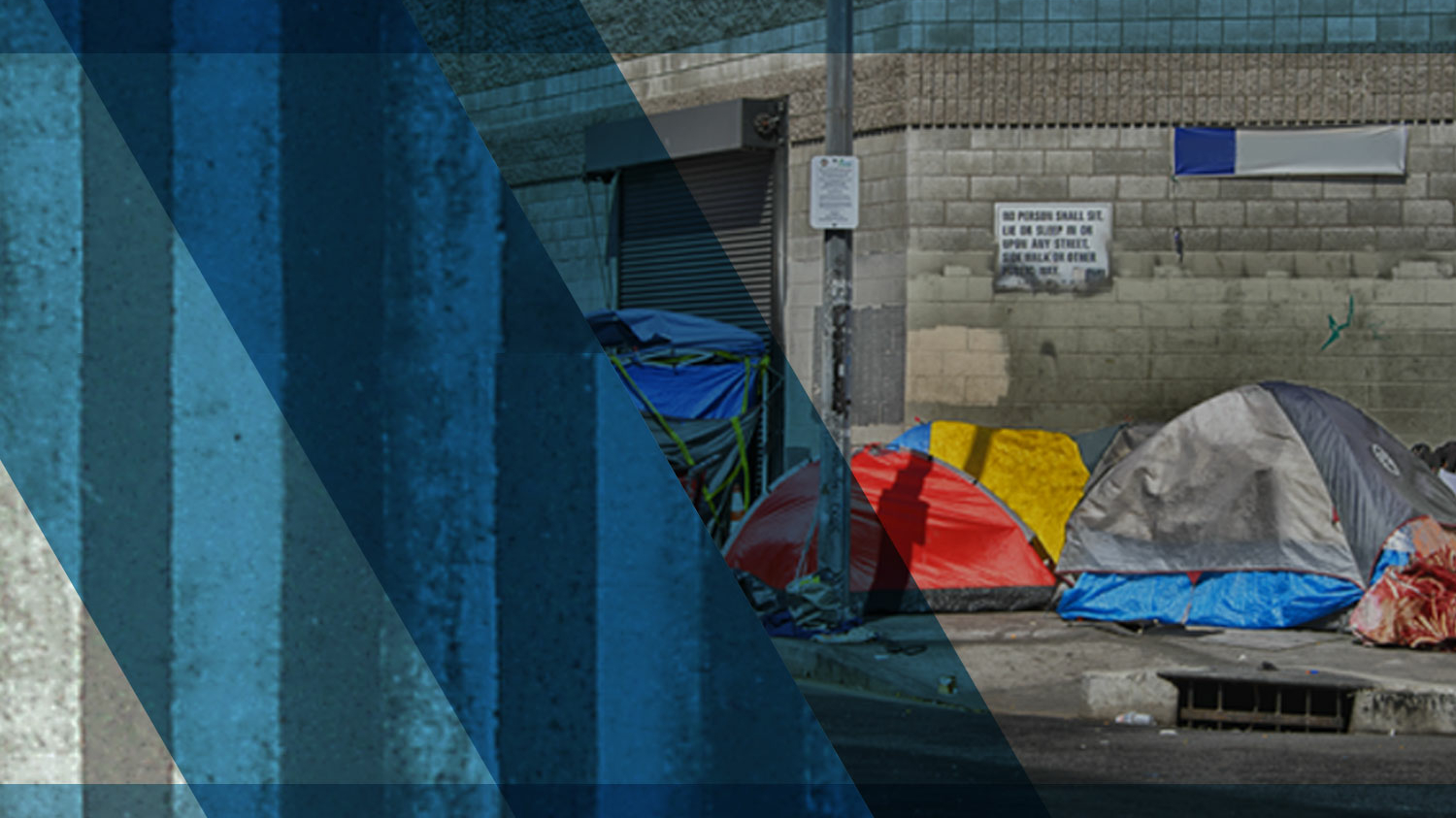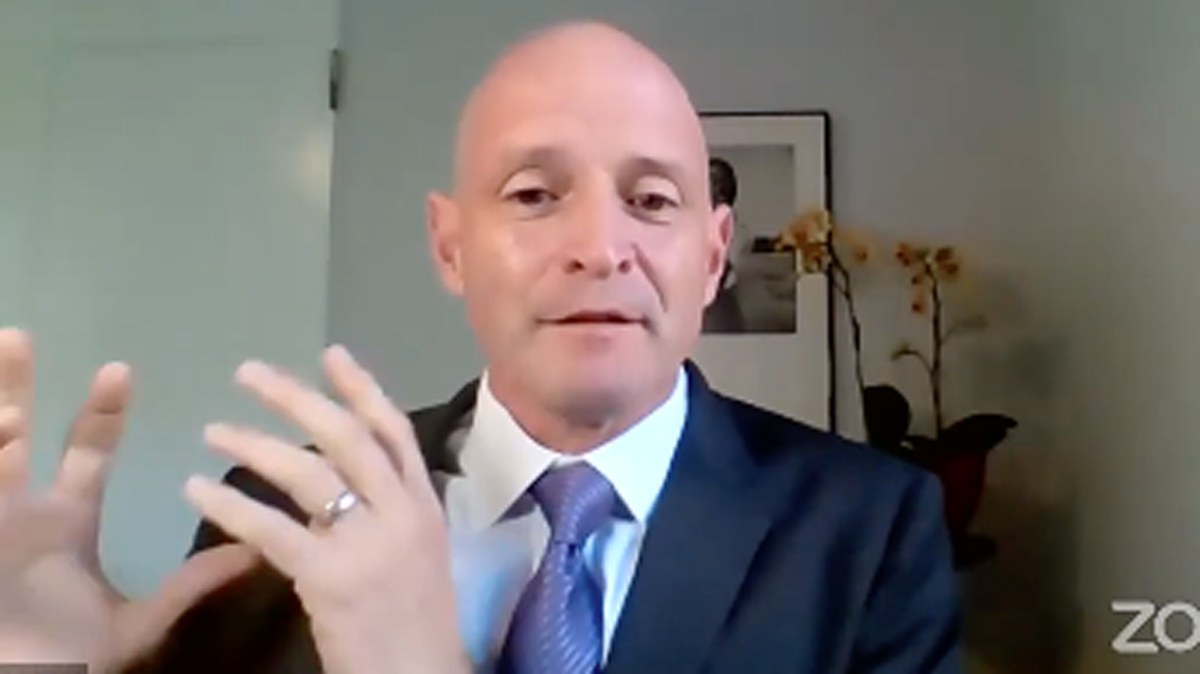Luskin Summit on COVID, Public Transit and Homelessness
In the Luskin Summit session “Transit Impacts: Fewer Riders, More Homelessness,” experts in urban planning and public policy discussed how the COVID-19 pandemic has affected the intersection of public transit and homelessness. Brian Taylor, director of the Institute of Transportation Studies at UCLA Luskin, spoke about the social service role of public transit and how the pandemic has affected ridership among different groups. Public transit ridership dropped suddenly and dramatically at the beginning of the pandemic but has been increasing slowly since, with returning riders more likely to be low-income and people of color, Taylor said. Conan Cheung, a senior executive at LA Metro, explained that the agency has made frequent service and fare adjustments based on changes in ridership and revenue during the pandemic. In a study of U.S. and Canadian transit systems, Associate Dean and Professor of Urban Planning Anastasia Loukaitou-Sideris found that over half of the agencies reported that they see at least 100 individuals who are unhoused per day. Many agencies also noted the lack of clear policies and training on how to respond to and interact with unhoused people, as well as a lack of support from local and state governments in addressing homelessness. Steve Martingano of Denver’s Regional Transportation District shared how his department redirected funds from the police division to hire mental health clinicians, form a homelessness task force and hire a full-time outreach coordinator to address the issue of homelessness in public transit. — Zoe Day
UCLA Helps Civic Leaders Address ‘Vexing Issues’ During Annual Mayoral Summit
The setting was virtual this time, but UCLA again figured prominently when the Los Angeles Business Council convened a who’s who of California elected officials and civic leaders for its annual Mayoral Summit on Housing, Transportation and Jobs, an event that UCLA has co-hosted for 18 of its 19 years. “This event is near and dear to our hearts,” Chancellor Gene Block said in welcoming remarks. “As a public institution with a deeply rooted service mission, we view it as our obligation to help address the vexing issues facing our city.” Academic research figured prominently in the daylong event presented in partnership with the UCLA Ziman Center for Real Estate and the UCLA Luskin Center for Innovation directed by JR DeShazo, professor of public policy. He moderated a panel focusing on how to promote zero-emission vehicles in an equitable manner, noting that California’s policy investments have brought low-emission vehicles to 10% of sales, a notable accomplishment. “But we have failed miserably to make those policies beneficial to our low-income communities and communities of color,” DeShazo said. Richard Ziman, who is founding chair of the Los Angeles Business Council, opened the virtual summit, and Stuart Gabriel, professor of finance and director of the Ziman Center, led a session on economic recovery efforts. Jacqueline Waggoner, Miguel A. Santana and Michael Mahdesian of the UCLA Luskin School of Public Affairs Board of Advisors also spoke, as did public officials that included Los Angeles Mayor Eric Garcetti, Senate President pro Tempore Toni G. Atkins and Assembly Speaker Anthony Rendon.
Luskin Summit Illuminates Pathway to Park Equity
“A Landmark Opportunity for Park Equity,” the fourth webinar in the 2021 Luskin Summit series, focused on the importance of public parks and other outdoor spaces for the physical, mental and environmental well-being of communities. The Feb. 17 panel was moderated by Jon Christensen, an affiliate faculty member of the UCLA Luskin Center for Innovation. Angela Barranco, undersecretary at the California Natural Resources Agency, explained that the “COVID-19 pandemic has elevated and revealed the importance of access to the outdoors for all.” She noted that 1 in 4 Californians has zero access to parks within walking distance, and 6 in 10 Californians live in park-poor neighborhoods. These inequities can lead to severe health consequences and in some cases could be the difference between life and death, she said. California voters have approved multiple statewide environmental bonds recently, making this a “watershed moment for park access,” said Alfredo Gonzalez, Southern California director of the Resources Legacy Fund. Norma García-Gonzalez BA ’95 MA UP ’99, director of the Los Angeles County Department of Parks and Recreation, highlighted the important role that the public park system has taken on during the pandemic, including serving as winter shelters and vaccination sites, and providing 40,000 households with food through a partnership with Los Angeles Food Bank. “Investing in parks for Black and brown youth is justice reform,” García-Gonzalez said. “This is a call to action that we must work with local and state leaders to make critical investments to support Black and brown students and their futures.” — Zoe Day
Luskin Summit Breaks Down Housing Injustice
A UCLA Luskin Summit webinar on the exacerbation of housing injustice and mass evictions during the COVID-19 pandemic drew a virtual crowd of more than 400 participants. Moderated by Michael Lens, associate professor of urban planning and public policy, “The Threat of Mass Evictions and an Opportunity to Rethink Housing” was the third segment of this year’s virtual Luskin Summit series. The COVID-19 pandemic has shed light on housing injustice in Los Angeles, with hundreds of thousands of renters facing joblessness, debt and the looming threat of eviction. “When the pandemic is laid upon the current housing crisis, it becomes clear that going back to normal is not enough,” Lens said. “We need a renewed commitment to the subsidization of housing, and we need to allow more homes of all types to be built.” Ananya Roy, professor of urban planning and social welfare, noted that working-class communities of color bear the brunt of evictions. “As billionaires have accumulated massive wealth during the pandemic, renters have accumulated debt,” she said. Housing and community development consultant Sandra McNeill discussed the growth of the Community Land Trust movement, which uses a model of collective land ownership to combat systemic racism and gentrification. “We share a fundamental belief that land and housing should not be treated as a commodity but as a common good,” she said. Marques Vestal, incoming assistant professor of urban planning, argued that this is an opportunity to completely rethink housing policy governance. “If we’re going to talk about housing redevelopment, let’s get creative about it,” Vestal said. — Zoe Day
Study Finds Challenges in Identifying Smaller At-Risk Groups for Pandemic Relief
Delivering COVID-19 vaccines and other pandemic relief to certain small ethnic populations in California may be a particular challenge for a somewhat ironic reason: Many members of those groups do not live in neighborhoods that have been identified as being highly vulnerable to virus transmission. A new UCLA study looked at five ethnic groups — American Indians, Pacific Islanders, Cambodians, Filipinos and Koreans — which, current data suggests, have higher-than-average rates of COVID-19 infections or deaths. Led by Paul Ong, director of the Center for Neighborhood Knowledge at UCLA Luskin, the study examined four data models that public policy and health policy officials typically rely on to decide how to distribute resources. Researchers found that the models do not properly consider factors such as underlying racial inequities and socioeconomic status. “The data we’ve been compiling show that Pacific Islander and other smaller Asian groups are two to three times more likely than non-Latinx white workers to be essential workers, who are at a higher risk of being exposed during a pandemic,” said Ninez Ponce, director of the UCLA Center for Health Policy Research, a partner in the study. “But they have received less attention because their numbers are fewer.” The study concluded that officials should look beyond geographic measures to address specific pandemic-related goals and relief efforts. “It would be great to pinpoint for state and local policymakers where the vaccines should go to help these vulnerable populations,” Ong said. ”Unfortunately, it’s not that easy, because they are a hidden diaspora and not tied to a geographic place.” — Elaiza Torralba
Experts Reimagine Wildfire Preparedness at Luskin Summit Session
Over 500 participants joined the Luskin Summit 2021 webinar “Preparing for Even Wilder Wildfires” on Feb. 4 to learn about the impacts of wildfires on health, housing and infrastructure, particularly in low-income communities. The webinar was moderated by JR DeShazo, director of the UCLA Luskin Center for Innovation, and featured a panel of experts from government, nonprofits and academia. Calling 2020 a year of disastrous wildfires, Professor Michael Jerrett of the UCLA Fielding School of Public Health pointed to an indelible human fingerprint on forest mismanagement. He identified wildfires as an environmental justice issue due to the disproportionate impact on people of lower socioeconomic status. In addition to the destruction of housing and infrastructure, wildfires emit complicated mixtures of pollutants that can have negative health consequences on human populations, he said. DeShazo explained that even in an ideal wildfire management scenario, we will still face small wildfires, reinforcing the importance of developing policies to mitigate their impact on our health and environment. Gregory Pierce, associate director of the Center for Innovation, spoke about the housing affordability crisis that has led to a pattern of building homes in fire-prone areas. He suggested increasing the supply of affordable housing in areas that are not prone to wildfires, updating zoning and urban design standards, and implementing policies to increase the fire resistance of buildings. Justin Knighten, advisor to the California Governor’s Office of Emergency Services, highlighted the importance of infusing equity into the conversation and reimagining what it means to be prepared for wildfires while working with vulnerable communities. — Zoe Day
Images of Pepper-Sprayed Girl Underscore Urgency of Minimum-Age Laws
Video footage of a 9-year-old girl being handcuffed and pepper-sprayed by police in Rochester, N.Y., has put a spotlight on a key question for policymakers: At what age should a child be shielded from detention, prosecution and incarceration in the criminal justice system? That question is the focus of scholarship by Social Welfare Chair Laura Abrams and Elizabeth Barnert, assistant professor of pediatrics at UCLA’s David Geffen School of Medicine. Their collaborative research at the intersection of child health and juvenile justice has led to data-driven recommendations about the minimum age of criminal responsibility, factoring in brain development, competency and childhood experiences. Abrams and Barnert recently worked with the National Juvenile Justice Network (NJJN) to form a broad coalition of advocates and health professionals working to raise the age at which children can be processed on criminal charges. Internationally, that age is most commonly set at 14; in the United States, more than half of states have no minimum age at all. “Processing and confining children in the juvenile justice system is traumatic and exposes them to damaging collateral consequences,” including disruptions to education, employment, and mental and physical development, argues NJJN, which released a policy platform and other resources on the issue in January. The incident in Rochester, captured on police body cameras and viewed widely, illustrates the urgency of this advocacy, Abrams said. “No child should ever be cuffed or arrested. Period,” she said. “Our work on minimum age laws shows that criminalizing childhood is racist and has adverse outcomes on children’s health.”







